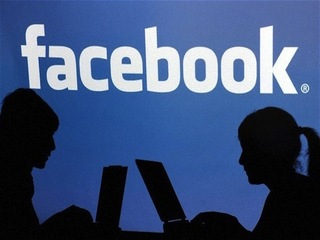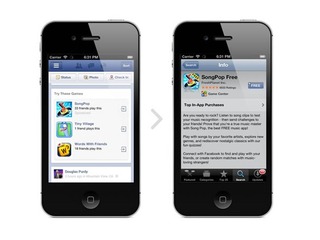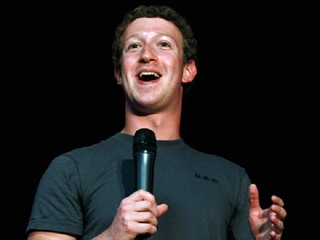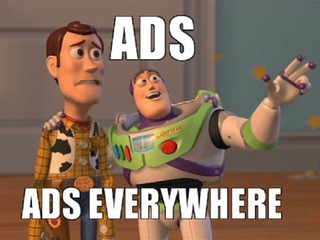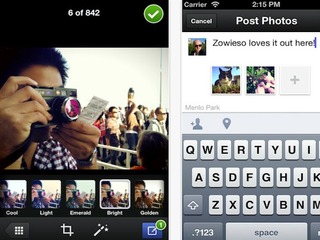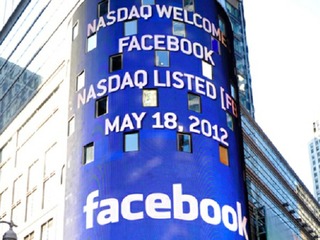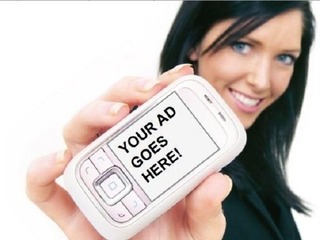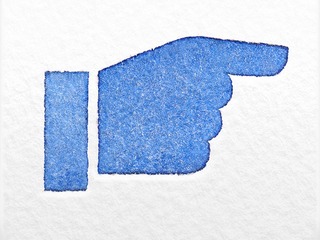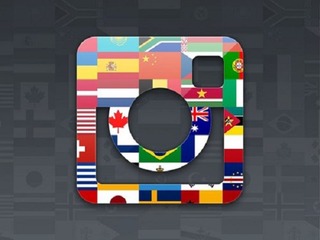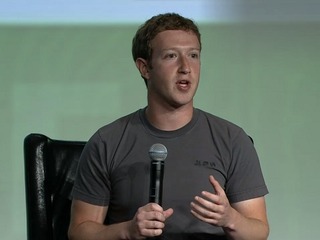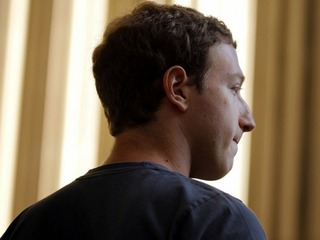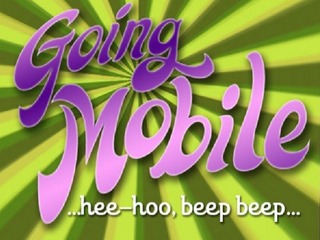Maven Clinic launches program for members who want to get pregnant without IVF
The company also expanded access to 12 different provider types for male fertility care
Read more...
Facebook had quite a year in 2012. Not only did it become a public company in an IPO that quickly became an embarrassment due to a ton of legal complications, but it also was the year that Facebook truly went mobile, putting all of its eggs into that basket. 2012 was also the year when Facebook finally figured out how to sell advertisements.
Here is a look at 10 of the biggest moves that Facebook has made in the last year:
1. The Facebook IPO Mess
In May Facebook raised $16 billion for its IPO, the largest ever for a tech company, when it priced its shares at $38. While Facebook’s stock did manage to rise over 12% to spike at $42.05, it eventually came down again, ending at $38.23, a mere 0.6% rise over its initial price. Not exactly earth shattering. In fact, very anticlimactic - given the hoopla leading up to the big event.
But what happened afterward is what everyone will remember.
In the days after the IPO, it became a giant mess, with lawsuits from investors and investigations by government agencies and both Houses of Congress. Everyone involved in the IPO, from Facebook, to its underwriters, to Nasdaq, was sued by somebody.
Morgan Stanley, along with other Facebook underwriters such as JP Morgan, Goldman Sachs and Bank of America, cut revenue forecasts for Facebook just days before the IPO. The question then became: did the banks only lower their forecasts because Facebook told them to? And did they only tell their top clients about their lowered projections and leave smaller investors with false information?
It was also revealed that Nasdaq had experienced technical problems just before the Facebook IPO this past Friday. A large number of cancellations resulted in a 30-minute delay in the opening of the stock and caused Nasdaq to experience a backlog of order messages that it was not able to deliver to investors for up to six hours. This lead to a class action lawsuit against Nasdaq.
2. Buying Instagram
A month before it's IPO, Facebook surprised everyone when it snapped up the hottest photo sharing app on the market -- Instagram, right as the company announced its $50 million Series B round of funding from Sequoia, Thrive Capital Greylock, and Benchmark.
The purchase has turned out to be a huge boon for both Facebook and Instagram. In a conference call following the social network's latest quarterly numbers, Mark Zuckerberg called Instagram "a platform success story.”
He said that Facebook bought instagram after it built a social integration that a lot of people really liked. And both companies saw opportunity to do even more together.
Instagram had 27 million registered users when Facebook first purchased it, and now has over 100 million. And, now more mobile time spent on instagram than on Twitter, according to Zuckerberg.
The next step for Facebook will be finding ways to to advertise on Instagram, though they recently found themselves in a bit of hot water when they tried to do so.
3. Becoming mobile only
In Septemper, Mark Zuckerberg gave his first interview since Facebook's disaterous IPO (see above), in which he said, "We’ve transitioned, and we are a mobile company. All the code that is being written is mobile.”
In the conference call I mentioned above, he reiterated the same points, calling it a "myth" that Facebook cant make money on mobile. He said that it was "the most misunderstood aspect of Facebook today,” and lamented that people underestimate how good the trend toward mobile can be for the social network.
There are three reasons mobile he gave for why mobile is so good for Facebook: it can reach more people on mobile than desktop, people on mobile use Facebook more often, and in the long-term Facebook will be able to monetize better for the amount spent on mobile than on desktop.
A big part of Facebook's mobile strategy has to do with advertising, which brings me to the next event on our list...
4. Advertising
This year, Facebook worked overtime to make money off of advertising, through a series of tests that included running ads on Zynga, putting ads into mobile news feeds and testing out a mobile ad network.
Some of these tests worked better than others. Advertising on mobile news feed, for example, has been a big success.
The ads will appear in user News Feeds as what looks like suggestions, or recommendations, for which apps a user may like. For example, it may come under the header "try these games." Once a user clicks on one of the ads, or suggested apps, they will be redirected to either the iOS App Store or to Google Play to purchase that app.
The ads can be specifically targeted to certain audiences, specified by age group, gender and region. Tools will also be provided to the developers that will help them monitor the effectiveness of the advertisements
Mark Zuckerberg has said that they are more effective than desktop ads, and they are so profitable that eMarketer revised its mobile ad spending projections for the year Monday, based simply on the results of those advertisements.
One that seems to have failed, at least for now, is the mobile ad network.
The way it was meant to work was that if someone used Facebook to authenticate a website, that person would begin to see targeted ads for other websites or apps. Authentication gives the app the ability to know the identity of a Facebook user, and to read and write data via Facebook's APIs. The app will then use the Facebook data it has access to, including their sex, age, location and Likes, to target advertisements. Facebook recently announced that beta tests for the network will be shut down at the end of the month.
5. New stand alone apps
Another part of Facebook's mobile strategy has been to develop its own stand alone apps, outside of its main app, a process that began last year.
Facebook’s first app, separate from its main app, was Facebook Messenger. In March 2011, Facebook acquired Beluga, a free and private group messaging service for iPhone and Android devices, for an undisclosed amount. Beluga was eventually transformed into Facebook Messenger, which was launched in August 2011.
Facebook’s second stand alone app was Instagram, and, after that, it debuted its stand-alone Camera app for iOS, with 14 different filters such as cool, light, and copper, in May. The app also let users tag friends and locations, add a description, and post quickly within the app. In essence, it was an Instagram copy made by the company that had just bought Instagram.
Just this week, Facebook debuted its fourth stand alone app, Poke, which is essentially a rip off of Snapchat.
Facebook’s Poke app allows users to send each other messages, photos, or videos that will only have a set time limit before they expire. They can poke an individual friend or several at once. Each message expires after a specific time you've set, either 1, 3, 5 or 10 seconds. When time runs out, the message disappears from the app.
6. Saying goodbye to Zynga
In October, Zynga released a statement saying that it was lowering its outlook based on disappointing preliminary third-quarter results. Due to Zynga’s weak performance, JP Morgan analyst Doug Anmuth has lowered his estimates for Facebook’s payments revenue in 2013 to $582 million from $797 million, based on how much of its revenue would be coming from Zynga.
It was just the latest step in the declining relationship between the two companies, which had seen its once mutually beneficially partnership crumble as Zynga’s games became less popular, and the company became more dependant on Facebook for revenue, even as the amount of revenue Facebook was getting from Zynga was declining.
In the first quarter of this year, 15% of Facebook’s total revenue was brought in from Zynga. Of that revenue, around 11% came from the 30% in transaction revenue Facebook takes from Zynga for virtual goods, in addition to direct advertising bought by Zynga. The other 4% came from advertising that was done on Zynga games.
That number was down from 19% the previous quarter, where 12% of Facebook’s revenue came directly from Zynga and 7% came from the revenue generated by ads.
Then, finally, in November, Zynga and Facebook filed documents with the SEC to loosen the relationship between the two companies.
According to the documents, Zynga will no longer be obligated to display Facebook ads, or use Facebook credits in its games on its own platform. Any games offered on its platform, or other platforms, will still have to be offered on Facebook too, though there are some exceptions regarding real-money gambling games, mobile games and games launched in China or Japan.
Facebook will be able to develop its own games, and Zynga’s ability to cross promote between games will be limited by Facebook’s standards of service.
Cross-promotion means putting ads for Zynga in Zynga games on Facebook’s platform. Zynga also will not be able to use e-mail addresses obtained by Facebook to promote its games.
7. One billion users!
In October, Facebook announced that the site had reached one billion monthly active users.
That is one billion people logging into Facebook every single month. Let's put this in perspective: the number of people occupying the planet right now is just under 7 billion. That means that one out of every seven people alive went on Facebook in September.
In addition to reaching the user milestones, Facebook has also announced it had 1.13 trillion likes since launching them in February 2009. The site has 140.3 billion friend connections, 219 billion photos currently on the site, 17 billion location-tagged posts and 62.6 million songs that have been played 22 billion times.
Compare that to Twitter, who recently announced that it had reached 200 million active users!
8. Worldwide expansion
Facebook may have over a billion users, but that hasn't tried to stop it from expanding even further!
In September, Facebook teamed up with Myriad Group, which develops services for feature phones. Facebook wants to open up in new markets, and it is going to use its mobile service to do it.
Myriad was chosen by Celcom in Malaysia, Indosat in Indonesia and Mobilyin Saudia Arabia to bring social mobile messaging services to 70 million users through its text-based Myriad Updates service. By partnering with Myriad, it would bring Facebook to millions of new users in these previously untapped markets.
Earlier this month, Facebook said that it will be updating its Messenger for Android app, now letting non-Facebook users to sign up for the service.
The app, which was only be available for those with a Facebook account, will now be open to anyone who wants it. The roll out for the new feature will begin in five countries, India, Australia, Indonesia, Venezuela and South Africa, before it reaches the rest of the world.
Why these countries? Because of their low adoption rates, and their high potential, especially in India and Indonesia.
Data from SocialBakers shows that India ranks as the number 3 country in terms of number of users, but the social network only has a 5.24% penetration rate in the country. Indonesia is also high on the list of users at number 4, but the penetration rate is once again low, at 20.92%. The large number of existing users, combined with the huge potential for growth, makes these two countries perfect candidates to roll out the new feature.
9. Updated iOS app
Zuckerberg stated his biggest regret was waisting two years developing an HTML5 version of Facebook rather than on a native app.
In August, the social network made, what many would call, an overdue update to its native app for iOS.
The app was able to cutdown the load times because content was now cached between views and was given built-in the Messenger functions. This update also allowed people to see profiles that are ported over to Timeline, which the previous app was not equipped to do.
Another functionality that should help people adopt and keep the app user base up is by updating the stories faster and allow users to jump from feature to feature without re-loading and updating the place.
Despite these updates, Zuckerberg still expressed some disappointment in the iOS, saying that the company decided that it wanted to get the rewrite done as quickly as it could, despite having a bunch of features it wanted to add. To simplify it, Facebook decided to get the new version out there with the same features as before, just faster. But now that the company did that, it can finally get around to giving people the good stuff.
“One of the things I’m really excited about is that, in parallel, our teams have been building other features and apps that we just didn’t launch with the last release, because we wanted the first release to be this clean thing, with exactly the same feature set, just really fast now. Over the coming weeks and months I think we can expect to see a lot of the cool stuff that people have been working on over the past half year, year, coming out in these apps as well.”
10. E-commerce here we come!
Facebook, as I said, was all about making money in 2012, once it became a public company with stockholders to appease. While advertising was a big part of that, Facebook also looked to other areas for money, including e-commerce.
In October, Facebook teamed up with a slew of business for its Collections service, which works similarly to Pinterest.
Here’s how it works: if you have Liked a certain company, let’s say Pottery Barn, images of products will show up on your news feed. If you click on the product and you want it, you can add it your wishlist by "liking", "collecting" or "wanting" it. Facebook is trying out all three terms.
Once the item has been collected there will be a button on the picture taking you an external website, in this case PotteryBarn.com, to purchase the item.
The feature was apparently so popular that, once the test was done, Facebook began looking to bring the feature to mobile.
(Image source: https://www.getfound.co)
The company also expanded access to 12 different provider types for male fertility care
Read more...Ezra's AI cancer screening platform will be available in 150 RAYUS locations
Read more...Foggy uses the Taptic Engine in Apple Watch to provide vibrotactile stimulation for gait freezing
Read more...